Introduction
Director Lukas Dhont’s Close is simply one of the most powerful films that I have seen, not just recently, but ever. Before getting into my thoughts about the film itself, I’ll cover some of the technical aspects of the Blu-ray release by UK-based label Mubi. I have provided many of the details on the Blu-ray.com page for the film, but will go into a more subjective review of them here. If you’re not interested in the technical aspects, feel free to skip to my review of the film itself at the end of the post.
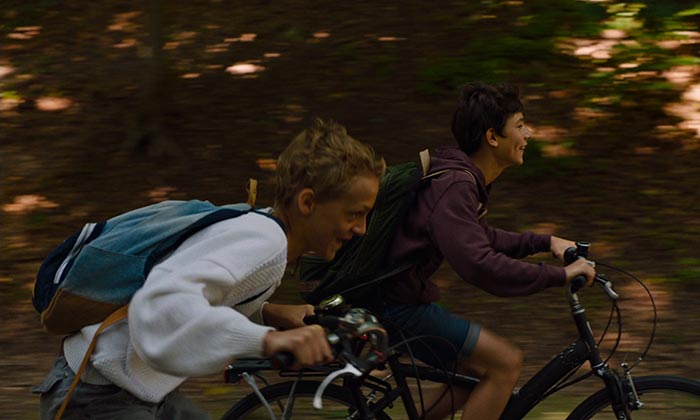
Blu-ray details
Video Quality
The BD50 disc is encoded as MPEG-4 AVC with an average bitrate of 31.80 Mbps in 1080p with a resolution of 1.66:1.
Overall the video quality is outstanding throughout, and fine detail is excellent. The colour palette is expansive and vibrant, yet natural with only a couple notable exceptions. Firstly, some interior scenes have a yellowish cast to them. They tend to be scenes with natural light coming into an otherwise dimly-lit room, but the cast is not distracting. Rather, I believe it was likely an intentional choice to intensify the warmth of the scene. Secondly, many exterior scenes are shot in direct sunlight, resulting in some highlight clipping and, less often, washed out colours. As said, these are very minor nit-picks that certainly do not detract from the outstanding video quality on this Blu-ray release.

Audio Quality
This release features 4 French audio tracks (DTS-HD lossless in both 5.1 surround and 2-channel, as well as lossy DTS), and 1 English audio track (lossy Dolby Digital 2-channel). I used the DTS-HD lossless 5.1 surround French audio track for my review, and found it to be centre-channel driven resulting in dialogue that’s consistently crisp and clear. The use of surround is subtle but very effective in adding nuance, especially to outdoor nature scenes where birds chirping can be heard to the left and right of the viewer. The surround was also successful in creating an encompassing sound stage in sequences with periphery elements, such as school scenes or during Léo’s hockey games.
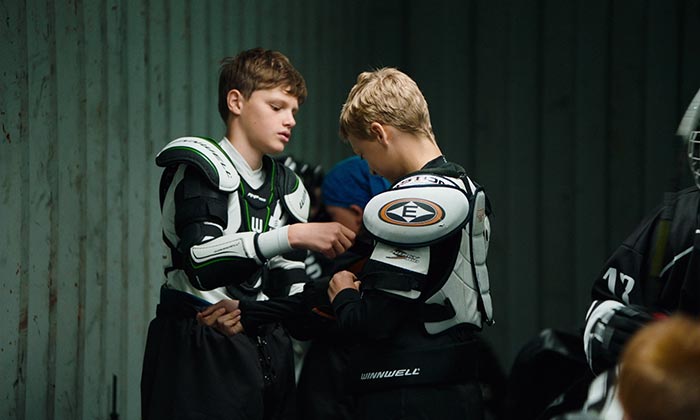
Extras
Mubi’s Blu-ray release comes with 2 on-disc extra features, and 1 physical extra:
- A Q&A session with Writer-Director Lukas Dhont and Joachim Trier
- A Q&A session with Writer-Director Lukas Dhont and Writer Angelo Tijssens
- A set of 6 art cards (14.5cm x 11.5cm)
Both of the Q&A sessions are wonderful supplements worth watching, as they give additional insights into the writers’ perspectives on the film. The art cards are beautiful screen captures, but given their size ratio (1.26:1), they are cropped down from the original video format (1.66:1) which results in some of the scene being omitted.

Additional Blu-ray Notes
This release by Mubi is locked to Region B, which is mainly EMEA (Europe, the Middle East, and Africa), but also includes Australia, New Zealand, and some other territories. That means that playing the disc outside of those regions will require a region-free standalone Blu-ray player or alternative method of video playback such as extraction.
The subtitles are in PGS (Presentation Graphic Stream) format, which is fairly standard for Blu-ray releases. However, since they are graphic-based instead of directly text-based, application playback enhancements (e.g. changing font size or weight) will not be available as they would be with SRT subtitles.
Film Review
Now that I’ve covered the technical merits of the Blu-ray release, I will share my thoughts regarding the film itself (no spoilers, but I will reference some particular scenes and dialogue).
Close focuses on two 13-year-old boy protagonists—Léo (played by Eden Dambrine) and Rémi (played by Gustav De Waele) —who, judging by their interactions on-screen, have been best friends most of their lives. After a schoolmate questions their relationship, Léo begins to distance himself more and more from Rémi, despite both boys missing what they once had. When a chain of events dramatically exacerbates this rift, the fragility of love becomes devastatingly apparent.
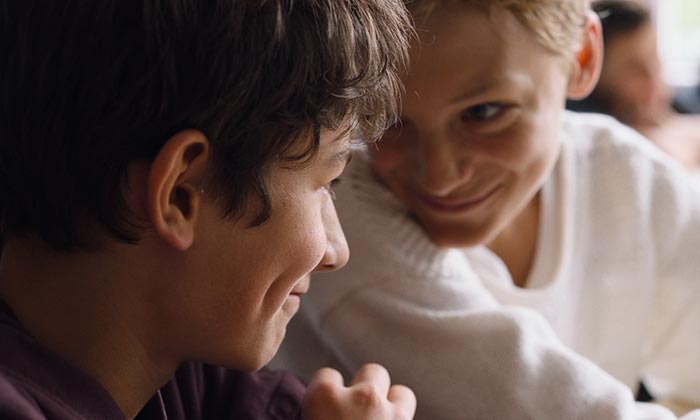
Though the premise of the film may be simple and undemanding, the execution of that premise is anything but. There are those films that one understands in the mind, and there are those that one understands in the heart. Close is exceedingly rare in that it gratifies both.
From the opening sequence illuminating the playful innocence of childhood, to the tenderness of Léo’s impromptu story to Rémi at a sleepover, to the connection between people who are hurting, the film eloquently portrays the myriad facets of human emotion. Further, the character development—especially of the two leads—is astonishing, in that I felt like I knew them and was a part of their world. Additionally, the juxtaposition between the boys’ affection for one another and their confusion spurred by the ignorance of others forces the viewer to relive the peaks and valleys of growing up.
There are two scenes that stand out to me as perfectly capturing the blissful aura of love. The first is the aforementioned sequence where Léo makes up a story to help Rémi fall asleep:
Imagine… you’re a very small duckling. You just came out of your shell. You’ve just opened your eyes for the very first time. All the ducks are yellow. And so are you… but you’re much more beautiful than the others. You’re special.
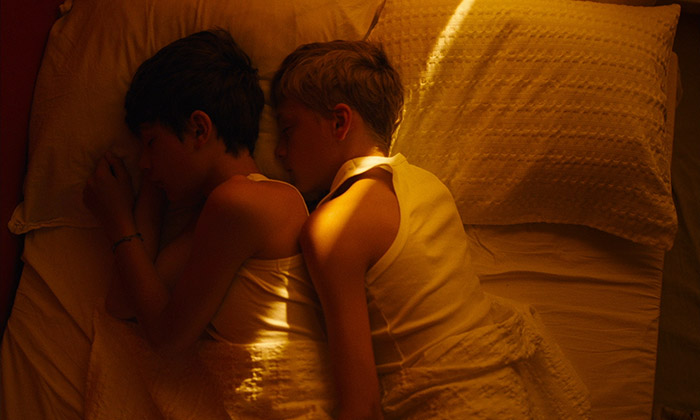
The other is Rémi’s oboe concert, which Léo attends in order to show support for his friend. At the start of the scene, Rémi is looking at his sheet music for the performance, and he’s visibly nervous. That is, until he looks up and realises that Léo is there. Though this isn’t a pivotal scene in terms of plot progression, I find it to be incredibly important for two reasons: 1) it thwarts an element of societal gender normativity by showing that boys also need to feel supported; and 2) that the affirmation of a caring smile is all that it takes to completely quell someone’s anxiety and fears.
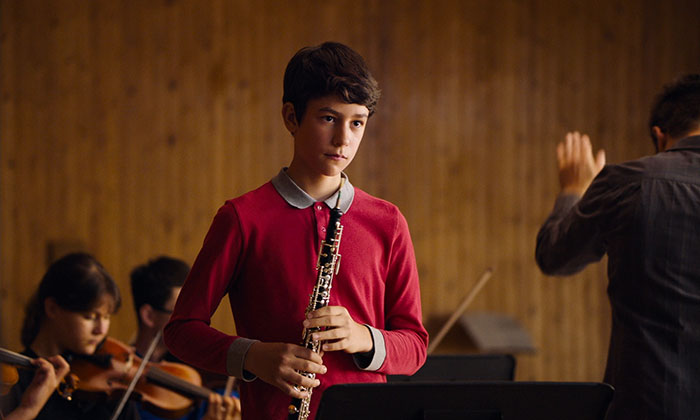

To elaborate on the first of these two points, many gender ideologies define a divergent set of “appropriate” emotional needs and responses for girls as opposed to boys. Some examples of these differing standards are the notion that “boys don’t cry” or that the need for physical affection as a form of support is warranted for girls, but boys who exhibit this need are somehow weak, effeminate, and inferior. This disparity is such a common theme throughout the film, that Léo even refutes his classmates who question his relationship with Rémi by pointing out that two girls can be close without it being suspect.
Of equal significance is the second point that a smile or other simple gesture of care has a radical impact. All too often, people go about their business paying little regard to the opportunities they have to improve another’s day. It takes nothing more than a quick smile to shift someone’s bad day into a good one simply by showing them that someone outside of “their world” has taken notice. It costs nothing to the giver and yet can mean everything to the receiver.
Conclusion
Given the recent societal politicisation of personal identity issues such as gender roles, sexual orientation, and LGBTQ+ rights, Lukas Dhont’s Close is aptly timed. Whether Léo and Rémi’s relationship is a childhood friendship, a deep yet platonic love for one another, or would have developed into something more, the overarching message is that we as people need to show one another understanding, empathy, compassion, and love in every plausible situation. I’m reminded of Ralph Waldo Emerson who said “You cannot do kindness too soon, for you never know how soon it will be too late“. Our lives and the experiences we have are fragile and ephemeral. Though some of them fade prematurely—and those voids can be the sources of great pain—we can and should hold onto the memories, for those memories are mirrors that can reflect what’s behind us even whilst we try desperately to move forward.
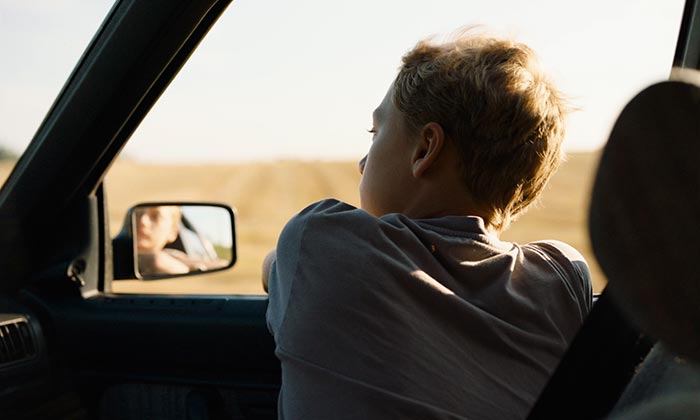










Personal reflection
I have been fortunate enough to see many wonderful films throughout my life thus far, and a select few of them have remained pertinent to me and my life. Never, though, have I had one speak to me remotely as much as Close. Even having watched it countless times now, the message, the impact, the beauty… they all resonate profoundly and deeply within me. It has caused me to reflect on my past experiences and how they have shaped the person that I am today; and to come to terms with who that person is—the goodness that I can offer others; the areas for growth and improvement; and the pain of recognising my immense shortcomings, flaws, and ashamedly ignoble nature.
I can only hope that one day I may have the honour of thanking Lukas Dhont in person for his work and this beautiful microcosm of humanism that resulted. Thank you so very much.

